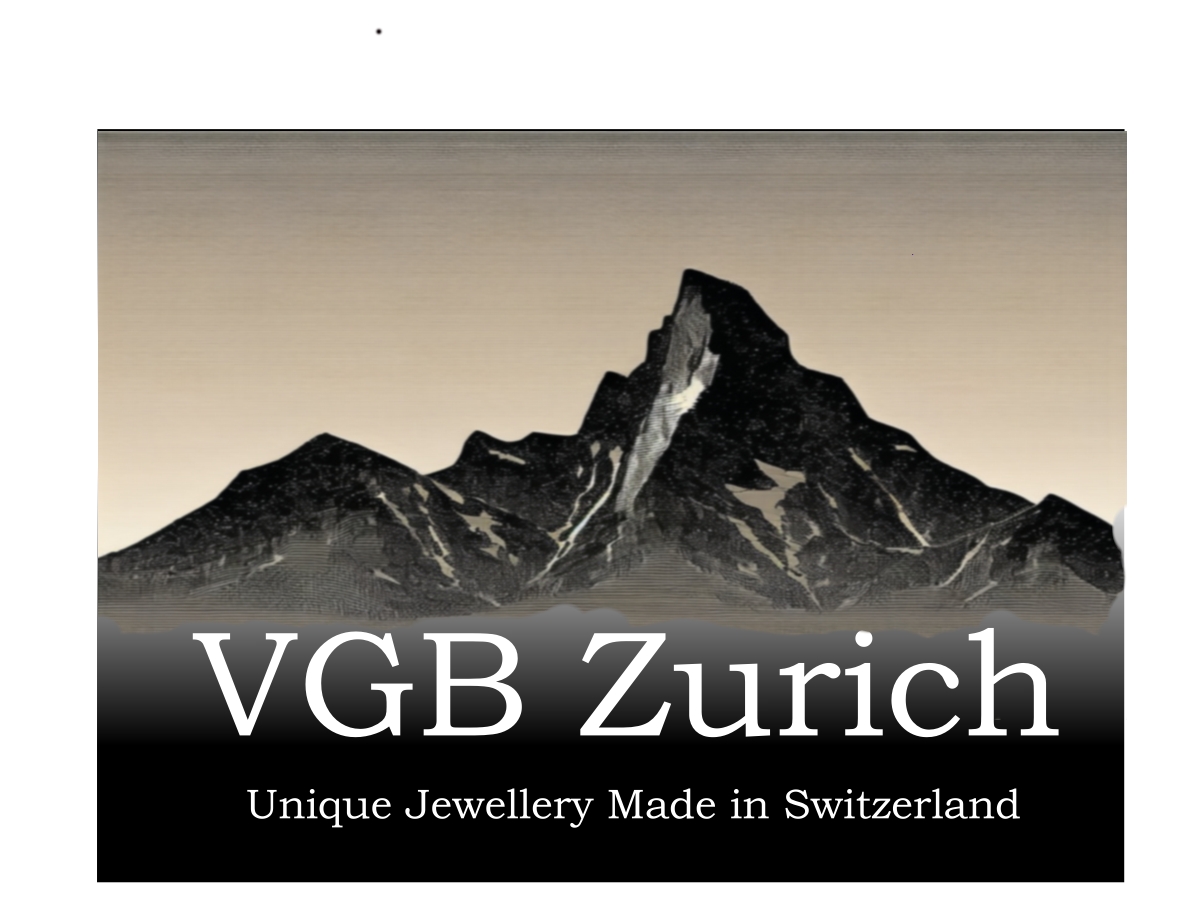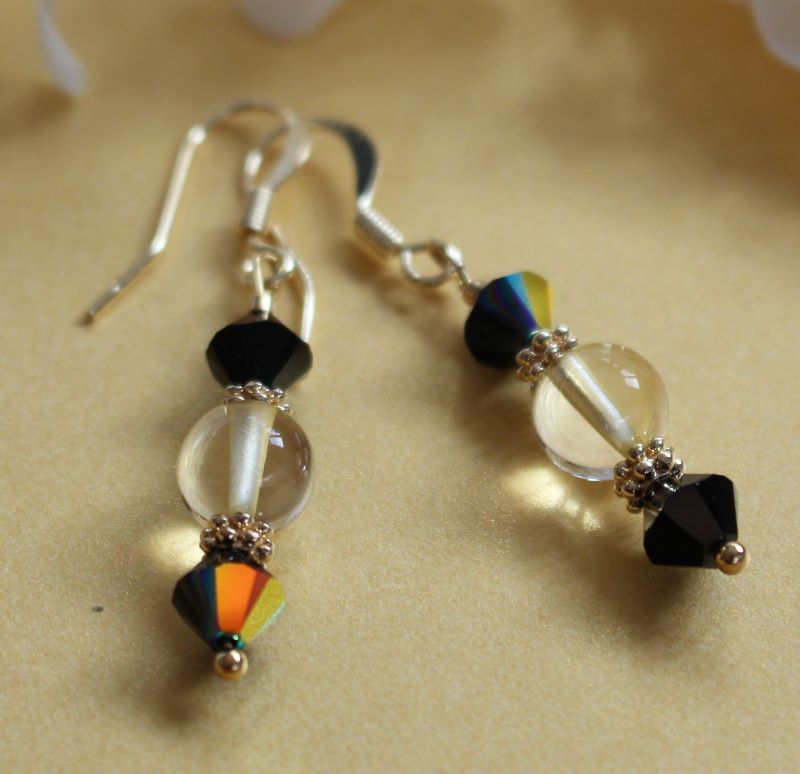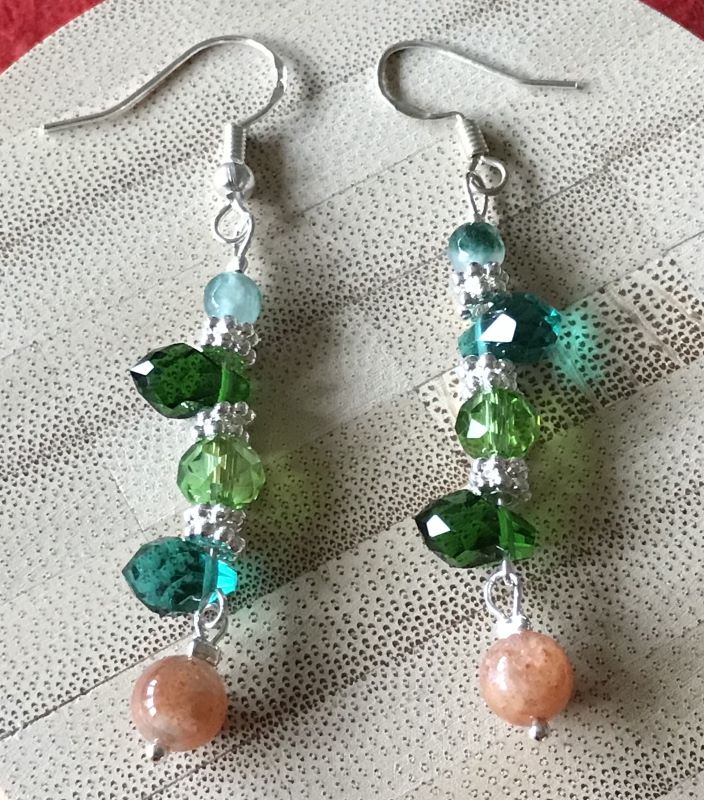How to choose the size of my bracelet with a clasp?
1. Measure your wrist with a measuring tape, yarn, ribbon or a shoelace.
2. Add 1-2 cm to it. Some people like it tighter and others looser. We recommend 1 cm, at least 1/2 an inch.
3. Add that number to your wrist measurement to find the perfect size for your bracelet. Check our table attached.
4. If you don’t see your size, don’t worry about it. We will be able to make it at your size. Write us an email at vgbzurich@gmail.com.
Download
How to choose the size of my bracelet with an elastic?
For elastic, stretch bracelet you don’t absolutely need to add extra spaces to your wrist measurement.
It is perfectly fine to not add any extra length to your bracelet size if you prefer a snug fit. Some people like their bracelets to fit tightly around their wrist, while others prefer a looser fit. It all comes down to personal preference.
However, if you’re unsure, it’s always a good idea to add a little extra length to your wrist measurement to ensure the bracelet will be comfortable to wear. A snug fit may feel uncomfortable or constricting if worn for an extended period of time.
How can I extend the lifespan of my elastic bracelet and other jewellery?
When you take off a bracelet, it will no longer be subjected to the constant pulling and stretching that occurs when you wear it. This allows the elastic to relax and return to its original shape, which can help prevent it from stretching out over time. It can help the bracelet fit more comfortably and last longer.
In general, it’s a good idea to take off all types of jewellery, including bracelets, when you’re not wearing them, to prevent damage and extend their lifespan.
How do I select the perfect jewellery?
1.If you are more fascinated by colours, then select a piece of jewellery you are drown to by its colours. What is your favourite colour?
2.If you are looking for your birthstone, then select the gemstone for your birth month.
3.If you are interested in the healing powers (body, mind, soul) of the stones, then select a piece according to what you are looking for. Maybe you are looking for a bracelet with gemstones to boost your self-confidence, give your clarity, or help your creativity. Or you are more into body healing and need help getting rid of your headaches or boosting your fertility.
4.If you more interested into shapes, pick something more with bicone, sphere, rectangle, square, pear drop or chips beads.
5.Maybe your main interest are natural crystals, rather than man-made crystals.
6. Maybe you absolutely would like a piece with Toho seed beads or Bohemian crystals.
How to keep your jewellery from tarnishing?
It is normal for silver sterling, silver plated, gold plated and brass jewellery to tarnish with time. The tarnish comes from sulfur dioxide circulating in the air. To prevent please avoid showering or working out with it. Avoid perfume, soap, conditioner, shampoo and chemicals. Don’t store in a wet place like a bathroom. Remove when swimming or going into thermal baths. Sweats, chlorine and salts are not good for your jewellery. Try keeping in a jewellery box. Avoid direct light. At bedtime remove your jewellery.
Use a polishing cloth to clean 925 silver sterling and gold plated jewellery. It will recover its shine very quickly. We recommend regular maintenance which can help to reduce the risk of tarnishing.
How can we clean jewellery made of brass?
Cleaning brass jewellery can help to restore its shine and remove tarnish and discolouration. There are several methods that can be used to clean brass jewellery, including the following:
- Soap and water: Gently scrub the brass jewellery with a soft-bristled brush and a solution of warm water and mild soap. Rinse the jewellery thoroughly with water and dry it with a soft cloth.
- Lemon juice and baking soda: Mix a paste of equal parts lemon juice and baking soda, and use a soft cloth to gently rub the paste into the brass jewellery. Rinse the jewellery with water and dry it with a soft cloth.
- Commercial brass cleaner: There are commercial brass cleaners available that are specifically designed to clean brass. Simply follow the instructions on the cleaner to restore the shine to your brass jewellery.
It is important to be gentle when cleaning brass jewellery, as harsh or abrasive methods can scratch the surface of the metal and cause further damage. If your brass jewellery is heavily tarnished, it may be best to consult a professional jeweller for cleaning advice.
Will all my gemstones be exactly the same?
Due to the natural variations of minerals, the colour and size of the gemstones in our products may slightly vary.
Even if we use the same suppliers due to the natural variations in the minerals, impurities, location, treatment, and cutting can create a wide range of appearance of semi-precious stones.
Additionally, the appearance of the stones may also differ slightly in different lighting conditions. This is a natural characteristic of gemstones and should be expected and makes a part of its uniqueness.
What does it mean?
Gold plated: is made of at least 3 microns to 5. It has 0,05 % of gold. The rest are metals such as copper or brass.
For instance a 18K gold-plated necklace is made of 925 silver sterling with a small 18K gold coating.
14K plated: it refers to a layer of 14-karat gold applied to the surface of a piece of jewellery or another object. The “plating” process involves electroplating a thin layer of 14K gold onto a base metal such as brass or stainless steel. The result is an item that has a gold appearance but is not made entirely of 14K gold. The gold plating can wear off over time, exposing the base metal underneath. The “14K” refers to the fineness of the gold, which is expressed as a percentage of pure gold. 14K gold is 14 parts gold and 10 parts other metals, making it 58.3% gold.
Silver plated: is made of thin layer of silver covered with other metals such as copper and brass.
24 karat: pure gold
20 karat: 83,3% gold & 16,7% alloy metals. Alloy metals are a two or more metals mixed together such as zinc, copper or brass.
18 karat: 75% gold & 25% alloy metals. The metal looks more yellow.
14karat: 58,35% pure gold & rest are alloy metals. The metal looks more golden.
10karat: 41,7% pure gold & rest are alloy metals.
925 silver sterling: 92,5% silver with copper or zinc.
For 925 silver jewellery, the 925 refers to the purity of the silver used, which is 92.5% pure silver and 7.5% other metals (usually copper). The quality of the metal used for 925 silver jewellery is also important because it will impact the durability and longevity of the jewellery. High-quality 925 silver will be more resistant to tarnishing and wear, ensuring that the jewellery looks good for a longer period of time.
What is the difference between gold plated silver and silver plated?
Gold plated silver and silver plated are both forms of metal plating, but they differ in terms of the base metal and the plating material used.
Silver plated refers to a base metal, typically copper or brass, that is coated with a thin layer of silver. This is often done to enhance the appearance of the underlying metal and make it look more like silver. However, since the layer of silver is thin, it can wear away over time, exposing the base metal underneath.
Gold plated silver, on the other hand, refers to a layer of gold that is applied over a base metal of silver. This is done to give the silver a gold-like appearance and to enhance its durability, as the layer of gold is typically thicker than a layer of silver in silver plating. Gold plating is also typically more expensive than silver plating due to the higher cost of gold.
In summary, the key difference between gold plated silver and silver plated is that gold plated silver uses a base metal of silver with a layer of gold on top, while silver plated uses a base metal of copper or brass with a thin layer of silver on top.
Can 925 jewellery be plated?
Yes, 925 sterling silver jewellery can be plated with other metals such as gold, rose gold, rhodium, and more. The process of plating adds a thin layer of another metal to the surface of the jewellery, changing its appearance and potentially increasing its resistance to tarnishing. However, it is important to note that plating can wear off over time, so the jewellery may need to be re-plated to maintain its desired appearance.
Is brass a good option in jewellery making?
Brass is often used in jewellery making due to its affordability, versatility, and appearance. It is a soft and malleable metal that can be easily shaped and moulded, making it a popular choice for a variety of jewellery styles.
Being resistant to corrosion and staining does not mean it is stainless?
Resistant to corrosion and staining does not necessarily mean that a metal is stainless. Stainless steel is a specific type of steel that contains at least 10.5% chromium, which provides its resistance to corrosion and staining. Other metals, such as aluminium, copper, brass, nickel, and zinc, can also be resistant to corrosion and staining, but they are not considered to be stainless. The term “stainless” specifically refers to steel with a certain composition and properties, and not all metals that are resistant to corrosion and staining can be classified as stainless steel.
Can stainless steel tarnish?
Stainless steel is a type of steel that is resistant to rust and staining, making it a popular choice for jewellery that is meant to be durable and long-lasting. However, it is not always non-tarnishing, and may still require some maintenance to keep it looking its best.
Over time, stainless steel can still develop a patina or discolouration if exposed to certain conditions, although this is usually much less noticeable than tarnishing in other metals. Regular cleaning and maintenance can help to reduce the risk of tarnishing in stainless steel.
Are titanium, rhodium and platinum stainless and non tarnishing materials?
Yes titanium, rhodium, and platinum are naturally stainless metals and non tarnishing. Titanium is a strong and lightweight metal that is highly resistant to corrosion and tarnishing, making it ideal for jewellery applications. Rhodium is a rare and expensive metal that is often used to plate other metals, such as white gold, to improve their durability and resistance to tarnish. Platinum is a dense, heavy metal that is highly valued for its natural resistance to tarnish and corrosion. Platinum is commonly used in jewellery, especially for engagement rings and other fine jewellery.
All three of these metals are naturally resistant to tarnish and corrosion and are considered stainless, although they may still require maintenance and cleaning to keep them looking their best.
Which other metals are resistant to staining and corrosion?
- Aluminium: it is a lightweight and corrosion-resistant metal that is commonly used in construction and packaging applications.
- Copper: it is a ductile and malleable metal that is resistant to corrosion in many environments.
- Brass: it is an alloy of copper and zinc that is resistant to corrosion and staining.
- Bronze: it is an alloy of copper and tin that is resistant to corrosion and staining.
- Nickel: it is a hard, ductile metal that is resistant to corrosion and staining in many environments.
- Zinc: it is a bluish-white metal that is highly resistant to corrosion and staining.
Do you we take commissions?
Yes, we take commissions. Please describe us your idea per email. You can draw it if you wish and then send us a photo at vgbzurich@gmail.com. We will be happy to help you as much as we can and fulfil your dreams.








